In Part I of Scenes From Paris, I described the first couple days in Paris– food tours, my frenligh speaking, and a brush with romance. In this Part II, I follow the footsteps of all-time greats like Napoleon and Oscar Wilde and… Owen Wilson…
IT WAS CRISP AND COOL on that Saturday morning, just 48 hours after touching down in Paris. Sun rays peered through my window from a bright, cloudless sky—highlighting streams of dust particles and warming my waking body.
I came-to around 8:25 AM. I laid there comfy and content, my eyes lightly closed. A marvelous silence filled the air—the kind that, I was to learn, is typical of Le Marais at this early weekend hour. And, as I thought of the stark contrast to my home town, a soft smile emerged.
By that point, on any Saturday in Venice Beach, California, half of the town is up. The earthy Venetians have already eaten their plant-based oatmeals and taken their hot yoga classes. And some have been bobbing for hours in the salt-water swell atop freshly-waxed foam boards.
But, as I lay stoic on the pulled-out sofa of my 250-square-foot Parisian Airbnb, those sounds that characterize most of my Saturday mornings were absent. The pavement patter of fashionably clad joggers, the creaking chains of beach-bound cruisers, the clicking plastic stroller wheels pushed by the gossiping young mothers—all, beautifully, absent.
I took refuge in this thought for a few minutes, treading lightly, happy to be right where I was. I felt like Dusty must have felt on those sunny, school day mornings when he would seek out the sun-lit part of the purple carpet in my parents’ bedroom. He would circle the sunspot like water circling a drain, and then, abruptly, he’d collapse his miniature legs, plopping down his belly, and stretching as beaming rays bathed his black, curly fur.
Rotating onto my side, now facing the sun, I grinned as the irony of poodle imagery in Paris occurred to me. But, then, just as I re-settled into my pillow, my nostalgia was suddenly smashed by a realization—
I slept in again! Cue the Home Alone music.
My eyes shot open and I executed a ‘kip up’ with the skill and explosiveness of a white-belt. A huge rush of blood dizzied my head and wobbled my stance. Then, balance regained, I made haste for the shower.
The thing I was running late for was a bike tour— an ‘Airbnb Experience’ I had booked weeks earlier. I was to be at Place Vendome— about a 35-minute walk from Le Marais— by 9:15 AM. Had I not been looking forward to it so much, I would have probably eaten the 45 Euros and basked longer in the coziness of the pull-out and Dusty.
After a quick, cold shower and violent towel-dry, I went in search of my tourist costume: comfy jeans, old t-shirt, a flannel shirt (buttons undone, sleeves furled to mid-forearm), light sporty jacket fastened around my waste. I could have been mistaken for Marty McFly had I been equipped with those white pumps rather than my over-trodden Nikes. With the final touches of an old backpack, holstered water bottle, and earbuds sprouting out my neck, the outfit was complete. No chance of being mistaken for a local.
By the time I descended the six-floor walkup, reached the street and Google-mapped my destination, it was 8:50AM. With Place Vendome over a mile and a half away, there wasn’t enough time for the leisurely walk and coffee I had planned.
Oh well, I thought to myself, another early morning jog it is.
The Starting Point: Place Vendome
The streets were still silent as I prepared to head west across the city towards the first arrondissement. Though I used Google to set my course, I took it from there, preferring to navigate on my own. This is perhaps ill-advised for a Paris-newcomer, the snaking city making it quite easy to go astray. But with basically a straight shot across town I wasn’t worried. Piece of navigational cake. I set off.

Many times when I jog, I have earbuds in, or I have my vision locked on the road, minding some nagging thought. Not here. In Paris, my head was up, my eyes alert and wonderstruck by the colorful, two or three story buildings. A scene fit for a “Lucy in the Sky with Diamonds” score. On a background of silence, the color and the sun created a mystical atmosphere. I’ve never been so at ease in a rush.
With my open flannel shirt flapping off my right shoulder, my wide eyes, and slow trot, I fancied myself a slow-motion Will Smith in Bad Boys. Only,—instead of a bad-ass, playboy cop running down a violent criminal—imagine a wide-eyed, barely-adult, jacket tied around his waist, chasing some muddle of rom-coms ideals. In the quiet morning scene, with so much to look at, I nearly missed my turn on Rue de la Paix. I made a left and headed south, and beneath the archways that lead to Place Vendome.
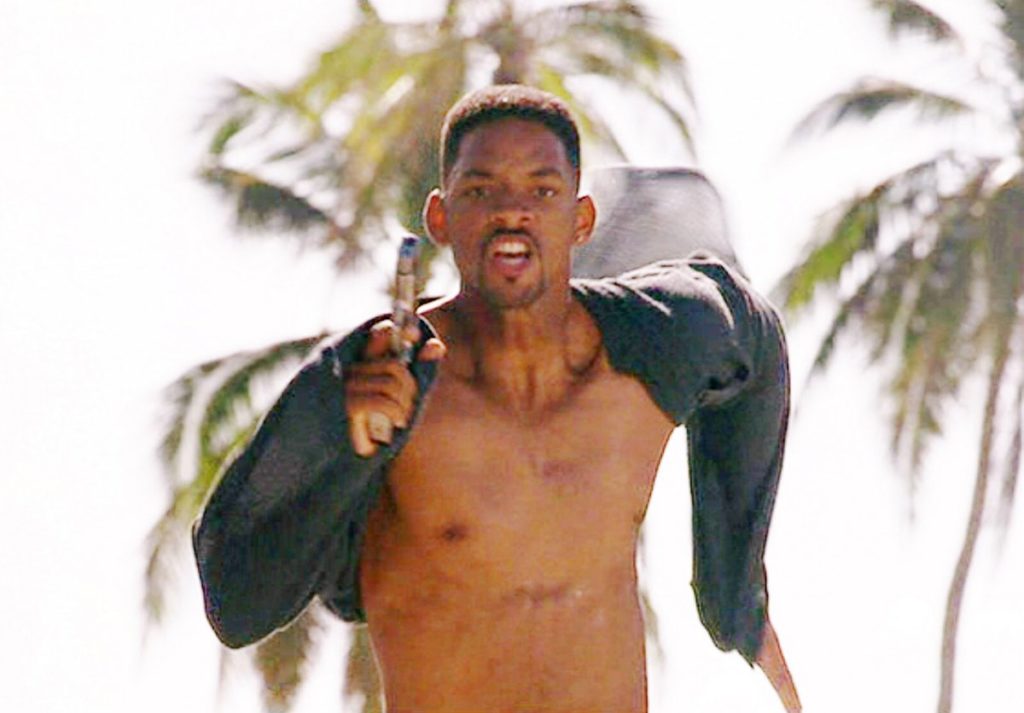
Upon entry, the site was quite impressive. The sheer size of the square and surrounding palace were substantial, though rather par for the Parisian course. A more curious attraction was the towering monument to my left—a single, imposing column standing over 40 meters high, holding what looked to be a Revolutionary Era general.
To the left of the obelisk stood a huddled, mixed mass talking steam into the sky. Equipped with fanny packs and pocket-stuffed maps, they had that foreign-city look of confused optimism. I knew it well. These were my people. I proceeded towards them with a child-like zeal.
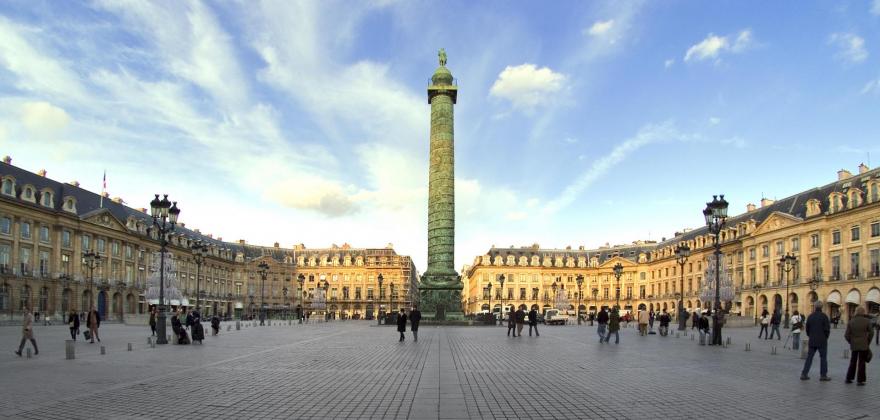
The Experience: Paris’ Best Kept Secrets Tour
The Experience was called ‘Paris’ Best Kept Secrets Tour’— a bike tour lasting 3-4 hours which was to take us through many of Paris’ most well-known, and some less well-known locations. As of October 2018, it was the # 1 rated Airbnb Experience in Paris.
Around 9:15 AM, the Experience leaders showed up, theatrically, on a couple of bikes. Dismounted, and approaching the group, they had a pleasant energy in their step. Their faces were so bright with cheer that just looking at them compelled a mirroring of their expressions.
They welcomed us warmly with a unified Bonjour! To some, they may have been a decibel too loud for the early hour. Not for me.
After introducing themselves, they split us up into groups. One instructor per about ten people. We drew Kevin as our fearless leader—a young, good-looking Parisian of perhaps 30 years. He was very energetic and obviously interested in what he was doing. With his facial scruff and canvas shoes, he looked like he could be a more elegantly dressed Brooklyn hipster. I was later to learn that Kevin was a civil engineer but was taking a break for this ‘much more interesting work.’
Kevin gathered our group and went through the day’s plan. As he spoke, I looked around the eclectic semicircle. There was a couple from Williamsburg (Brooklyn), a mother and her nine-year-old daughter from Scotland, a Norwegian couple of roughly 35, and an older couple whose origins escape me.
After laying out the ground rules, and explaining how the bikes worked (they were electric bikes), we were ready to start the tour. The first location was where we stood: the Place Vendome.
Without warning and without apology, Kevin launched into storytelling mode. He delivered it with all the energy and execution of an actor. The group was hooked.
The topic: the man at the top of the statue.
Napoleon and the Battle of Austerlitz

“The Battle of Austerlitz is the grandest of all I have fought.” N.B.
The Place Vendome was commissioned to be built by Louis XIV, also known as Louie the Great, or, my favorite iteration, the ‘Sun King,’ a reference to Apollo, thus associating himself with a god (puke). Luckily for us, the Sun King’s immodesty extended to glamorous edification. Louie Louie (oh, oh), whose pockets were quite deep (until they were not) commissioned the construction of many of Paris’s famous buildings including the Palace at Versailles, and much of the Louvre.
We’d hear more about ol’ Louis later on, but most of Kevin’s gripping story highlighted the tall monument. Specifically, the figure standing on top—none other than Napoleon Bonaparte, beaming with his characteristic pride and confidence.
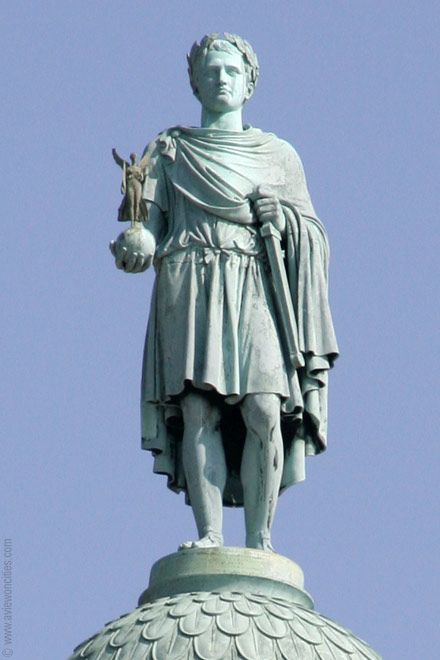
On his head, lay the laurels of the French emperor, in his left hand, a short sword, and in his outstretched right hand he clutched a cannon ball, the enduring symbol of the victorious battle for which the obelisk was built. On top of the cannon ball, stood a female goddess figurine, the ancient symbol for military victory.
What was this victory so important as to justify this massive commemoration? It was called The Battle of Austerlitz—a battle regarded as one of the most impressive victories in military history, and the one Kevin would tell to us in great, dramatic detail.
IN DECEMBER OF 1805, just one year following Napoleon’s coronation ceremony, the Napoleonic Wars had already been underway for thirteen years. In 1802, there had been a brief peace treaty, but the peace would be short-lived as Napoleon’s obsession with acquisition and glory burned on. His sights were set on the English Channel. This, of course, made quick enemies of the Brits.
In the meantime, the Russians, also unhappy with Napoleons unrelenting expansion, had allied themselves with the Brits, and thus, the Third Coalition was formed (Austria later tagged along). Aware of Napoleon’s plan, the Russians and Austrians set out to cut him off at Austerliz. The stage was set for a 2 to 1 battle—the Russians & Austrians versus the Grande Armee.
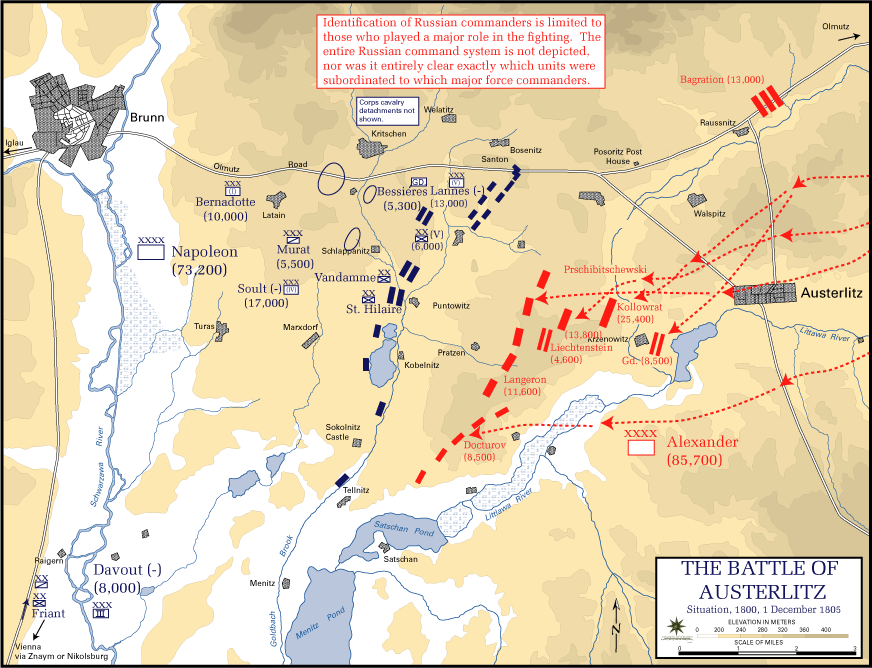
As the French crossed into Austerlitz, in what’s now the Czech Republic, Napoleon’s army was at a disadvantage. His Allied opponents outnumbered him with at least 10,000 more troops, and much more artillery. Napoleon knew he had to get to higher ground, but would have to bate the Allies towards him, in a famous rope-a-dope maneuver. The Little Corporal, as he was called affectionately by his men, executed this with his trademarks: genius strategy and speed.
“The truest wisdom is resolute determination.” N.B.
Before the Allies knew what hit them, the French had taken the Heights, and covered the Allies in falling shells and emptied rifles. The Allies had no choice but to retreat.
The battle ended in a famous scene, crystallizing the cannon ball as the symbol of the victory. The ground to which the Russians retreated was not ground at all. Disguised by the heavy fog, it was actually a frozen pond. Napoleon, in a decisive blow, fired cannons to the pond, sinking the Russo-Austrian army into the ice water, painting an Exodus like image—the Allies, like the Egyptians, sinking; Napoleon, of course, playing god.
“There are only two forces in the world, the sword and the spirit. In the long run, the sword will always be conquered by the spirit.” N.B.
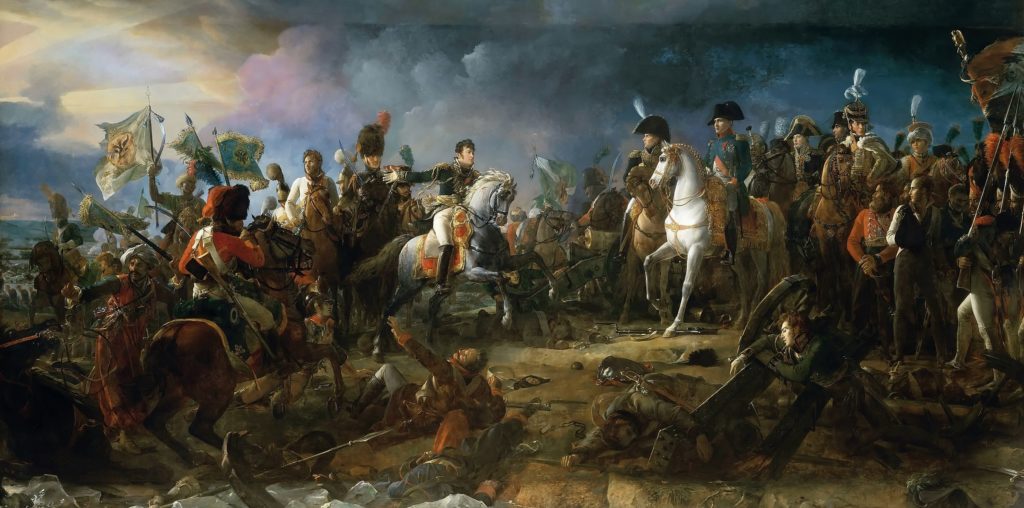
AT THE CONCLUSION OF the triumphant story, the group was captivated. I marveled at the skill of its teller. Rarely had I seen anyone deliver any story—particularly one that was at least 10 minutes long, and whose subject was 1800s warfare—with the kind of charisma necessary to hold the attention of a group of such varying age and background.
The rest of the day did not disappoint. We visited the Royal Palace, the glass pyramid outside the Louvre, the St. Germain area / Latin Quarter (including the café of artistic and literary lore, Café de Flore), and a couple secret locations. All of the locations were compelling, all rich with history and intrigue, and all amidst the smiling and gabbing of a quickly gelling group.
One of the highlights for me was the several hundred meter ‘sprint’ we were allotted, electric bikes turned up to full power (~ 18 mph). As as we sped passed each other under the car-banned tunnel along the Seine, for a second, time froze, leaving me in one of those rare, present moments.
With my hair vibrating in the wind, heart pounding and gleeful, I churned my legs and marveled at the speed, listening to the tunnel-hushed echoes of tires and laughter.
THE END OF THE TOUR found us near city centre. The sun was now brilliant in the middle of the sky, the shoppers and travelers stretched the city, moods, no doubt enhanced by a perfectly-weathered weekend.
Just like the day prior, though I knew of the certain ephemerality going into the bike tour, I still could not stave off this attachment. I made the same promises and suggestions. Maybe we’d meet up the next day for a coffee. Maybe I would see the one couple in Williamsburg in December. The kinds of plans you forge knowing upon delivery that they’ll never happen.
I smiled and hugged, and then, minutes later, I was back on the street. I took a walk through the first arrondissement, seeking a healthy refuge from the, thus far, quite heavy Parisian cuisine. And I stumbled upon the perfect spot.
H E A L I N G
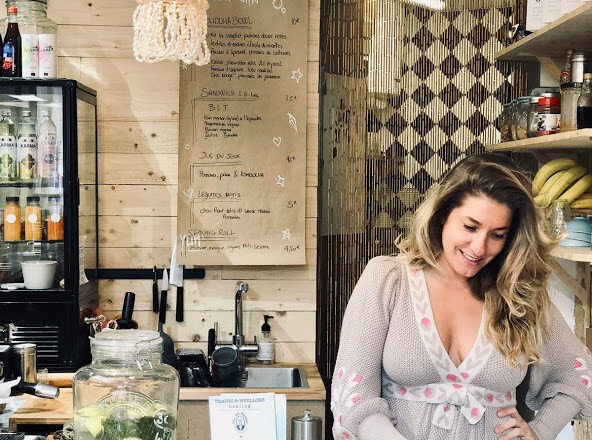
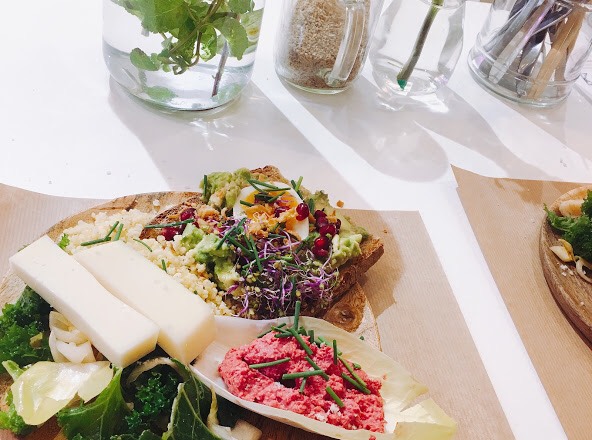
NOW, I WOULDN’T WANT to make a goal of it to ‘do Paris healthy,’ but occasionally, amidst a marathon of croque monsieurs and chocolate macaroons, an otherwise nutritious eater may seek the occasional caloric siesta. I was currently in this position having, in the last 24 hours, eaten my way through Le Marais, and already that morning having indulged in my 5th croissant in 3 days.
Before resorting to checking blogs and my pre-trip research, I decided to see if I could find one electronics-free. Not the most unlikely event, I figured, given that the city centre makes a business of catering towards tourists, including, of course, us kale-crazy Americans.
It turned out to be a good bet. Just over half a mile from Place Vendome, there sits the health-forward café and wellness center (apparently has a yoga studio upstairs) called, aptly, HEALING. It looked like a place right off of Abbott Kinney.
Seeing the familiar décor of a health-heavy café, I smiled and sighed . Ahhh. The fruits and veggies in bowls, plants coming from every which way, the sound of a smoothie being blended, the sound of a knife slicing through cell walls on a wooden board. I took one look at the trendily-fronted menu and I knew I was in the right place. A ‘Buddha Bowl’ complete with greens and yams over a bed of lentils and quinoa, anyone? Uh, duh.
As I finished my bowl, I admired the refreshing ambiance. Fully satisfied, I Merci-ed the two ladies at the register and headed out the door. Looking at my watch, I noticed that I had about 45 minutes to kill before my afternoon walking tour in the Latin Quarter. I saved HEALING in my phone (knowing I’d return) and headed across the Seine, watching the endless stream of people walking about in the afternoon light.
The Drinkers and Thinkers Tour
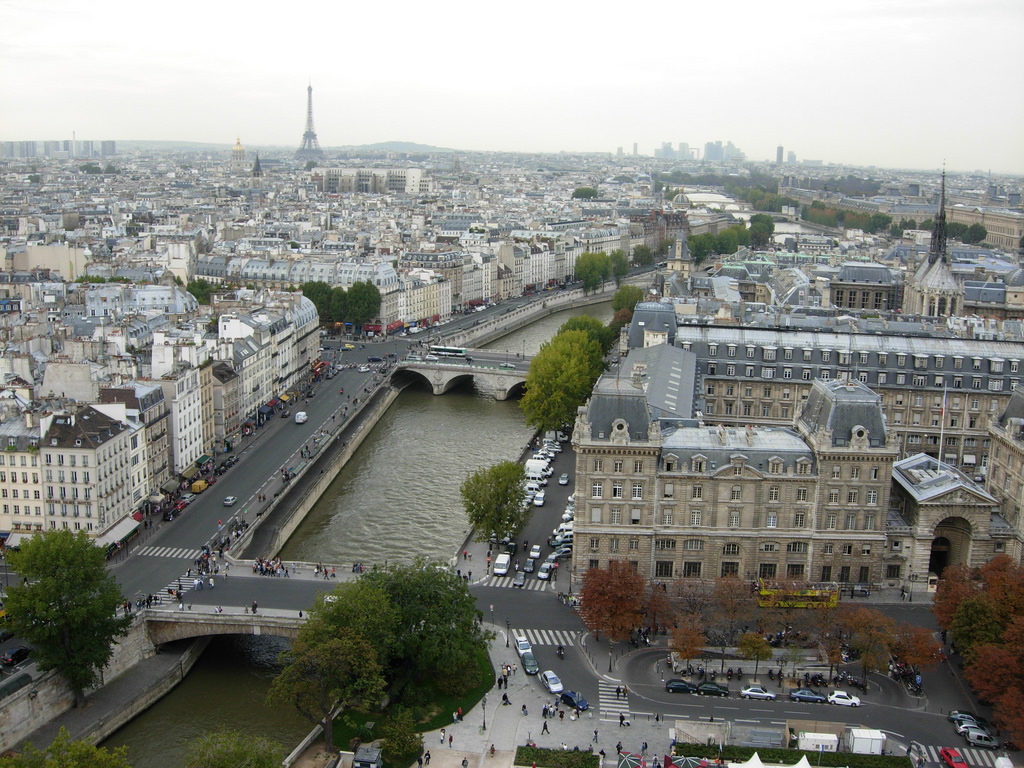
THE DRINKERS AND THINKERS TOUR got me a little closer to that fabled Paris for which I was searching. It was set on the ‘Left Bank’—the south side of the Seine where the then poor artists and students of the 1920s would soon become the legends of the Belle Epoch. In the ‘20s, the Left Bank served as the modest contrast to the power (government) and money on the Right. It is said that ‘the Right spends while the Left thinks.’ (‘This contrast has since been blurred as the one artsy, scholastic slums of the Latin Quarter have been gentrified much like a Williamsburg, NY or Silver Lake, CA).
In school, my favorite professors always were the ones who clearly loved the material and loved teaching it. This, I think, allowed for the connection to the students. It was this clear affinity and connection that got me to enjoy (and do well in) subjects in which I had no prior interest (business statistics, microeconomics, Trademark Law). This is what James had and it pervaded the entire three-hour tour.
James, an English professor at the Sorbonne (the Harvard of France), packed the few hours of the tour with a dizzying amount of historical figures and anecdotes. We’d see the old haunts and homes of Wilde and Hemingway, and learn about famed poet, Arthur Rimbaud and his drunken antics. We’d hear of Joyce and Balzac and Collette and Sylvia Beach. And, as we neared dusk, we would reflect on it all, drinking brown-bagged beers in those colorful Luxembourg Gardens, the sunset splayed upon the fall foliage.
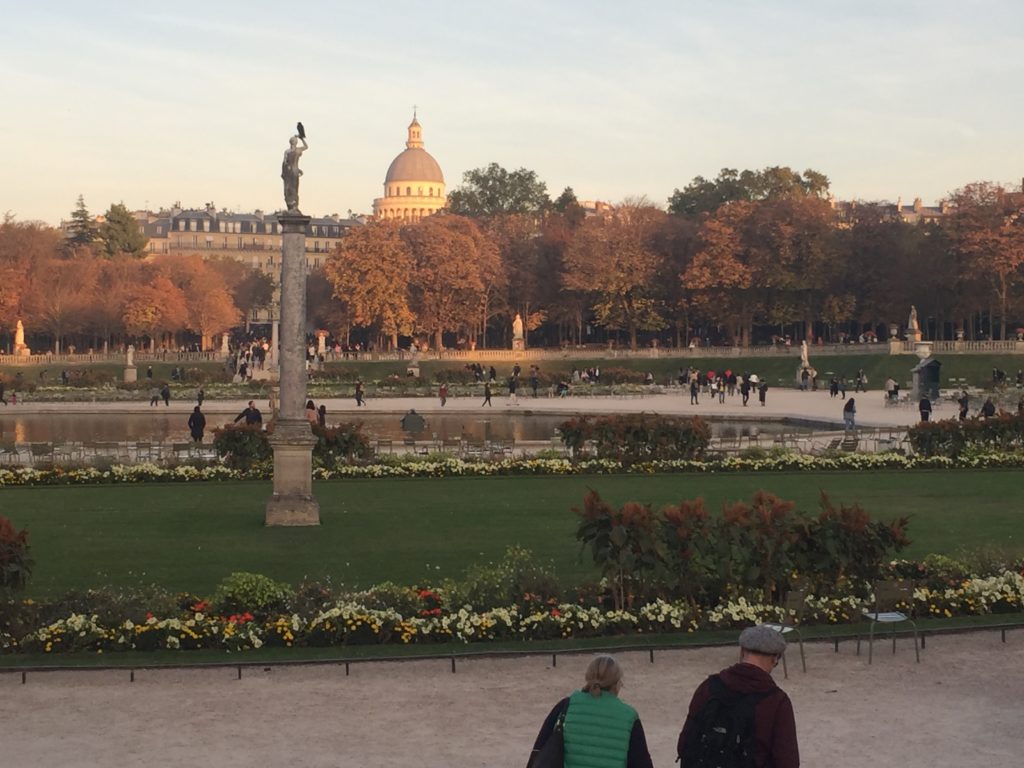
But, of course, my favorite part was rom-com inspired. As he was telling us of the struggles of a young, oppressed and moneyless Oscar Wilde, James brought us around a cobble-stoned corner in front of the Saint-Étienne-du-Mont Church. I had to screw up my eyes, and shake my head, as I viewed a scene that I was sure I’d seen before. Only, I hadn’t. At least, I’d never been there before. And yet, I recognized this exact area— most of all those stairs.
And then I remembered.
They were from a film. The steps were ones on which the rambling, romantic Gil Pender would lay drunk, but hopeful, awaiting his midnight carriage to a better life.
Right on brand, I struck the same pose. I spread out on the stairs, still slightly buzzed from the Dutch beer I’d had in the Gardens. Clutching a mini Chardonnay bottle, leaning on my arm, I temporarily forgot about the camera like an accidental method actor. Looking through the old street, my gaze softened and the images coalesced as I fantasized about my own carriage, and, briefly, slipped into a day dream.
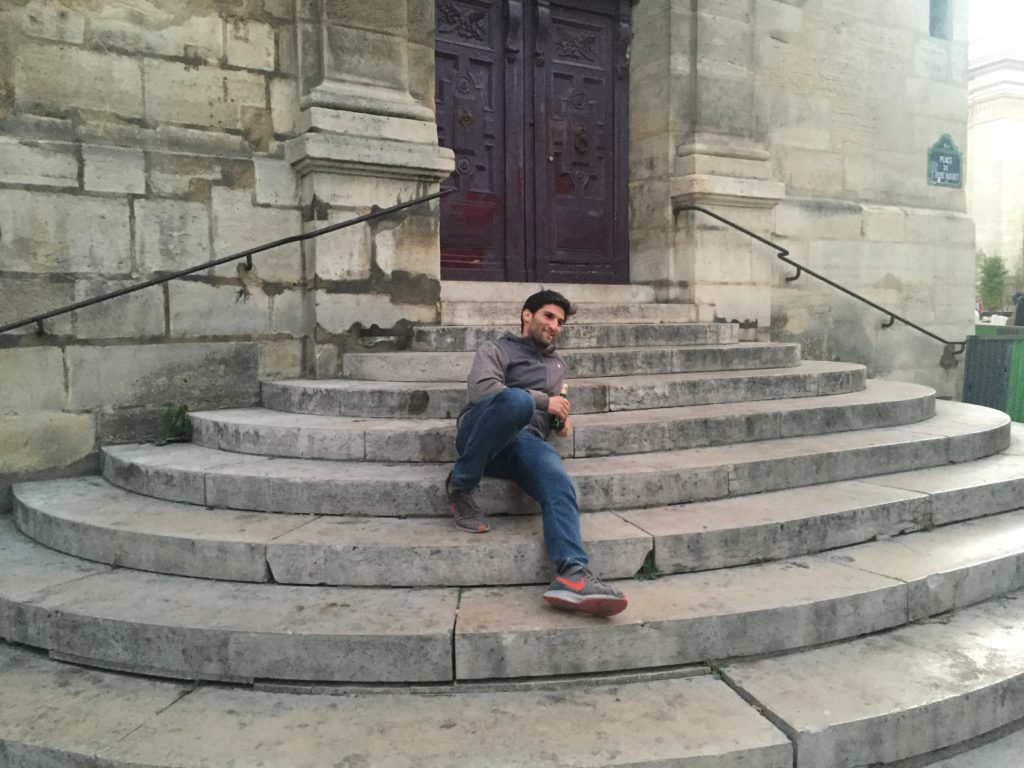
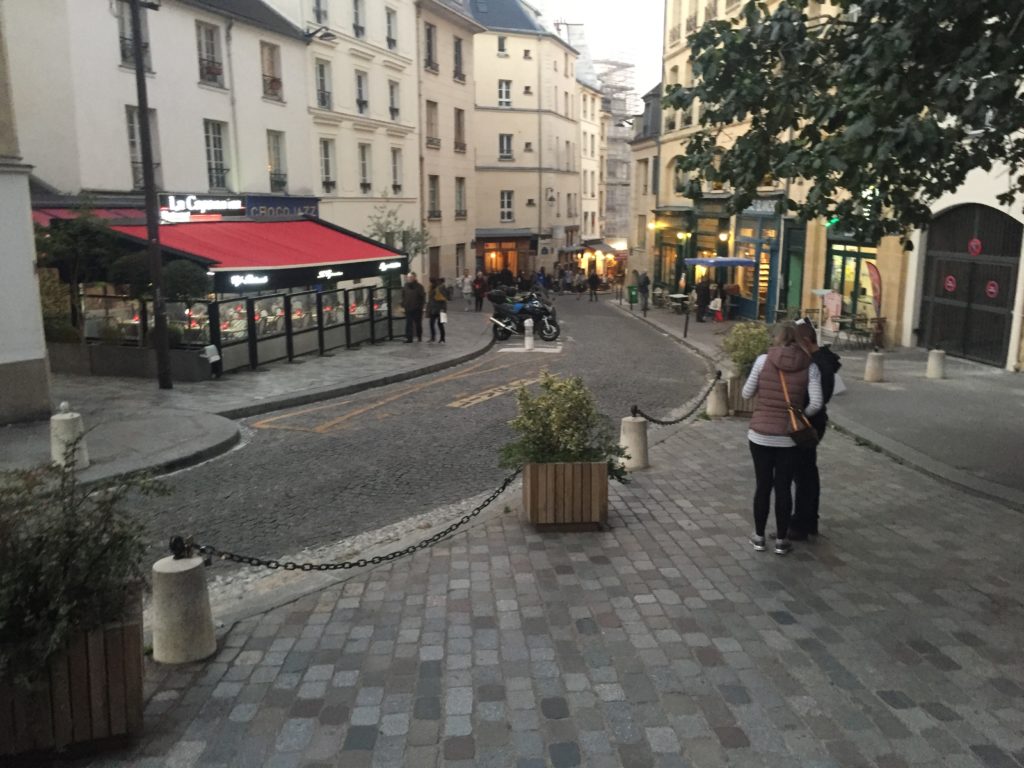
NOT LONG AFTER MY Midnight in Paris moment, the tour came to a close. At that time, we were propositioned—we could leave, as some had to, off to their dinners and shows, or we could join our leader for beers. To me, this was no choice at all. We went towards the square in search of a good spot.
We chose a small, buzzing Parisian bar in the center square in the Latin Quarter. Over beers and a french cheese plate, we spoke of our literary pasts and aspirations, all with just enough vulnerability to split my heart in two. The one side tugged upwards in the way that authentic connections do, trying to persuade me that this was the start of budding french friendships. The other maintained prudence, not allowing too much leash, anticipating the inevitable end-of-the-night walk of the solo traveler.
One by one, people peeled off, until the last three of us remained. We set out north in the evening darkness towards the Seine. We headed down Rue du Cardinal Lemoine passing James Joyce’s apartment on the right, until we came to Rue de Ecoles where we were to separate.
Immediately, that invisible hold set in that makes it hard to leave the warmth of a group. But, as it must, it soon relented to the always-persistent reality. We shook hands and dispersed.
I WALKED INTO THE COLD NIGHT, hands stuffed in either pocket, zipper up to my neck. As I looked around at the scene, the regulars in the bars, families just sitting down to a warm meal, two feelings crept inside me. One was of a foreign solitude. I could feel, distinctly, the outsider-ness of a visitor. Like looking into the snow-globe bubble from it’s plastic perimeter.
The other, though, was calm and confident. A strength that sometimes manifests when I’m off on my own, but somehow maintain a sense of control. I remember this feeling distinctly from when I was in Spain a couple summers ago—taking the metro and then the bus to some lesser-known part of town and, yet, still feeling confident, mingling with the locals.
In just three days Paris had become familiar. I knew where I was going. I knew, by heart, the walk back to Le Marais. I had memorized that right down the Seine towards the Sorbonne and the stadium and the south-eastern reaches of Paris. I recognized the bars and the buildings as I crossed the Rue de Rivoli. On that walk home what had felt like solitude became strength; aloneness became autonomy.
AS I CLIMBED THE STAIRS of my flat that evening, I had the sense that the best of this trip had yet to come. I had gotten a feel for the city. I had been able to bask in some of mysterious allure, but the highlights were ahead of me: a meeting I had arranged with a friend of a friend, a 2-day visit from my British friend, Sally, trips to Louvre and Montmartre and the Tuileries, and more.
And yet, what I couldn’t have known then, was that though those historic sites and friendly-meet ups would be great, many of the formative experiences of this trip were still hidden from view. Still a connection or two away. I had no idea what lied ahead.
My longed-for Parisian romances, whether with the girl or with the city, were yet to arrive. But they were coming.
Check out Part I here.
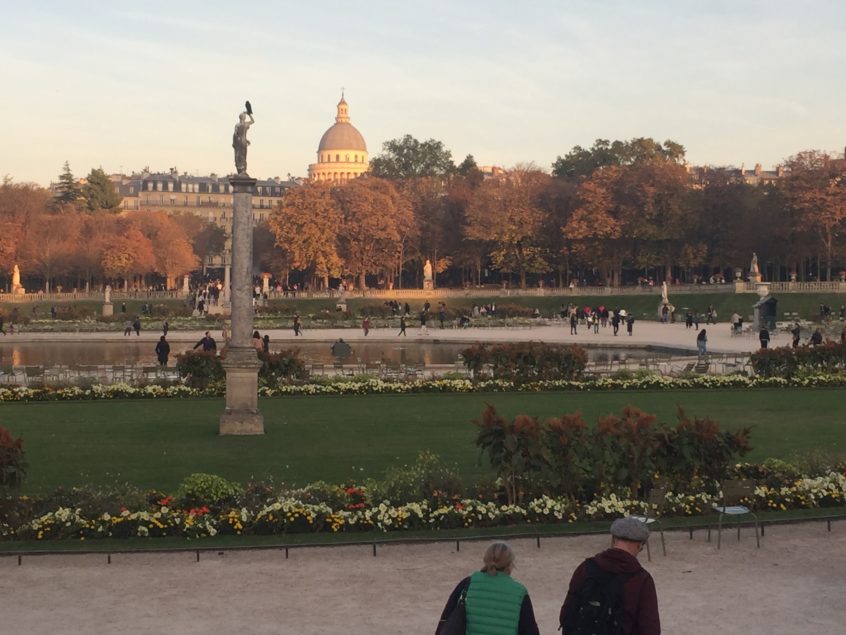


One Comment on “Scenes from Paris II: Luxembourg Gardens, Napoleon, and Midnight in Paris”
Loved this.